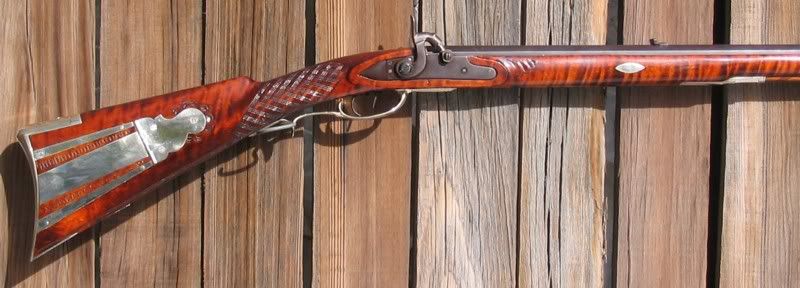Hi,
The labels "early" and "late Lancaster" used by TVM and other semi-custom makers are very generic and mostly used to differentiate between their products. There were roughly 3 periods useful for describing longrifles from Pennsylvania, early or colonial (?-1780 or so), golden age (1780-1810 or so), and late (1810-whenever). The earlier the period the more likely the gun has robust Germanic styling because the gun makers were either just off the boat from Europe or part of the first generation born in America. Thicker butts, often simple German baroque and rococo carving motifs (but sometimes quite elaborate), larger caliber barrels, imported locks from Germany, Belgium, England, and sometimes France. During the Rev War years handmade locks were more common but that did not last very long. Wooden lidded patchboxes were common but so were 2 and 4-piece brass boxes. Golden ages rifles tended to have smaller calibers, thinner stocks often with carving that was sometimes elaborate but composed of simplified rococo and baroque motifs. The guns were generally slimmer, almost petite. Metal inlays became more common. Wooden patchbox lids mostly disappeared during this period. During the late period, butts were quite thin, buttplates were more curved, calibers generally were small, locks imported or manufactured by specialized local lockmakers, carving degenerated and mostly disappeared, metal inlays became profuse. The best carving was done during the colonial and golden age periods. During the golden age, makers who were trained or worked during the colonial period tended to be better carvers than the next generation of makers. By the beginning of the percussion era, the artistic qualities of Lancaster rifles was mostly gone with a few exceptions. Set triggers were used during all periods but they became more common during the later part of the golden age. Locks reflected the technology of the times with many of the latest improvements developed in Europe eventually showing up on American guns. During all periods, hardware was almost universally brass and the vast majority of stocks were maple.
dave









